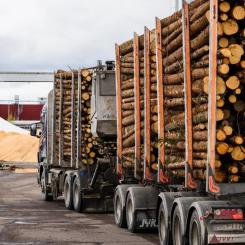The World Resources Institute published an Insights article in June 2024 highlighting that the area of tall Nordic forests has declined by 20% over the period of 2001-2021. However, Natural Resources Institute Finland (Luke) shows that the conclusion is completely wrong. Drawing conclusions about forest development based solely on remote sensing data can lead to highly erroneous conclusions and should be avoided whenever possible.
The conclusion of the Insights article is based on a study (www.sciencedirect.com) partly funded by the World Resources Institute. The Insight article (www.wri.org) states that the largest decline in the area of tall forests was seen in Denmark, Finland, Norway and Sweden. This contradicts Figure 6B of the original article, which clearly shows that virtually all of the claimed loss of tall forests occurred in Finland and Sweden.
Definition of tall forest
In the study the 77th Airborne Laser Scanning (ALS) canopy height percentile (P77) was used as a surrogate for tree heights in the Nordic countries. Actual trees measured in the field were not used at all. Tall tree forests were defined as areas with a P77 value ≥15 meters. Luke translated this P77 ≥ 15m definition into a forest height attribute using actual field-measured data from Central Finland. Luke’s field plot size was 30×30 meters, which corresponds to the plot size used in the study, i.e. approximately Landsat pixel size. Luke calculated the P77 values from the ALS data and compared these values with the basal area weighted mean heights (BWH) of the field-measured trees. BWH is a commonly used height attribute of forests in the Nordic countries.
Conclusions
Estimates from the National Forest Inventory data clearly show that the area of tall forests in both Finland and Sweden has increased substantially over the period of 2001-2021. The reason for an opposite trend in the above-mentioned study remains unsolved. However, it is obvious that analyses of forest development based solely on remote sensing data can lead to highly erroneous conclusions and should be avoided whenever possible.


























































